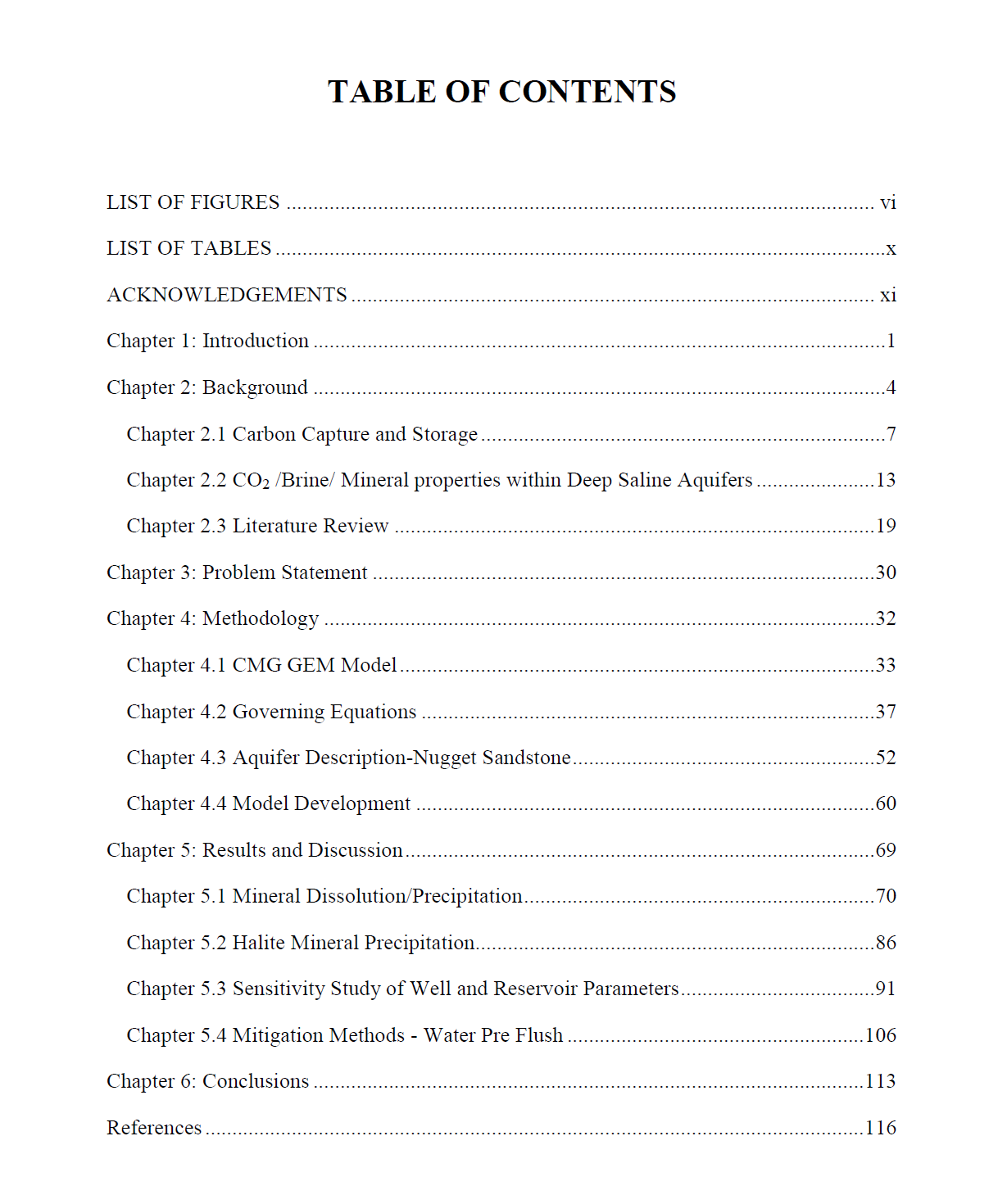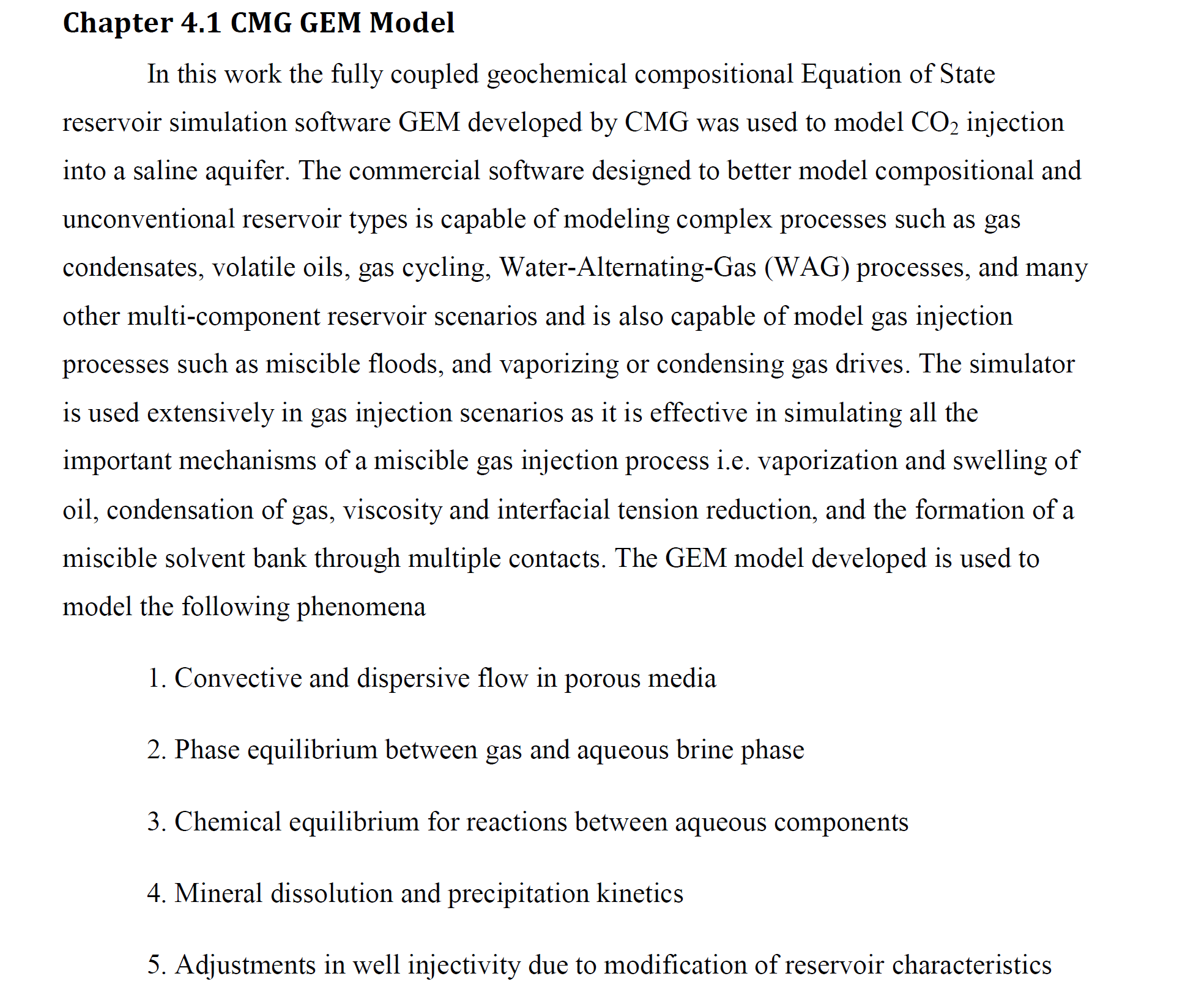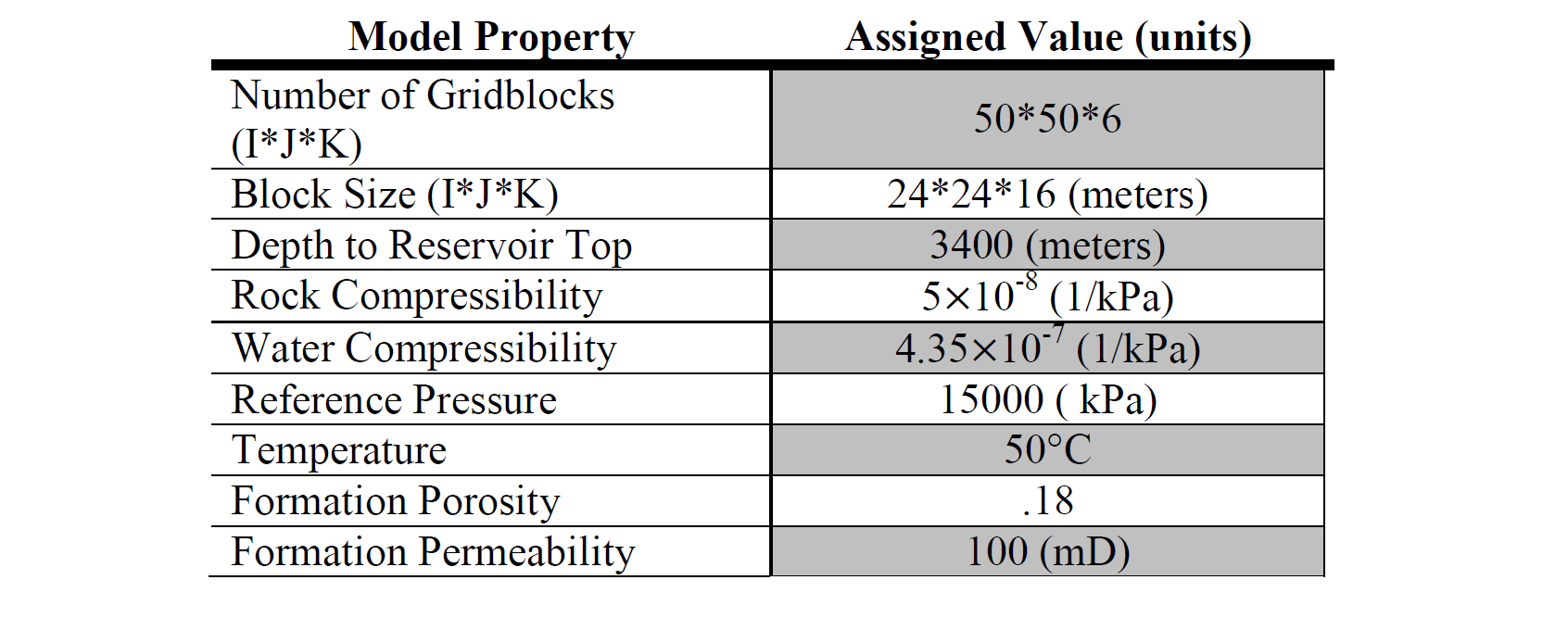MODELING THE EFFECTS OF SALT PRECIPITATION & KINETIC MINERAL REACTION ON WELL INJECTIVITY DUE TO CARBON DIOXIDE INJECTION IN DEEP SALINE AQUIFERS
本论文旨在探讨在深层咸水层中进行二氧化碳封存所可能引起的地球化学反应及其对岩层特性和井注入能力的影响。通过商业模拟软件GEM开发多个模型,研究了长期注入二氧化碳后的岩矿物溶解和沉淀以及盐析的规模和范围,并评估了对井注入能力的影响。通过敏感性研究,评估了二氧化碳注入速率、岩层温度和盐度对盐矿物沉淀及其负面影响的潜在影响,并研究了通过淡水预冲洗来减轻盐析的负面影响的潜力。实验结果表明,在二氧化碳注入后,溶解是主要的矿物反应,对井注能力影响较小,盐析的范围仅限于井口附近区域。研究也指出地层矿化度是影响盐析的最重要特性,高矿化度会对岩层孔隙度和渗透性造成明显影响,但可以通过淡水预冲洗来有效消除这些影响。因此,本研究为深层咸水层二氧化碳封存提供了重要的理论和实验基础,为实际应用提供了可行的技术支持。
Abstract
Within recent years public interest has steadily been growing over global climate change and the lasting effects caused by greenhouse gas emissions, carbon dioxide in particular. In attempting to reduce CO2 emissions and mitigate the associated negative effects, carbon dioxide capture and storage, also known as carbon dioxide sequestration, has emerged as a method by which CO2 emissions may effectively be reduced long term. Of the potential geologic storage sites for captured CO2, deep saline aquifers present the most attractive storage option.
Unfortunately, little is known about the complex processes which take place between CO2, the host formation, and in situ brine at the conditions found within these aquifers. Mineral dissolution and precipitation reactions which take place in response to the acidic environment formed once CO2 is injected have the potential to alter formation properties. In addition, Halite precipitation due to vaporization of the brine phase into the continuous flowing dry CO2 phase is a phenomenon which has been observed extensively on the experimental scale and has been observed to negatively impact sample porosity and permeability.
The impacts of these geochemical mineral reactions on formation properties and well injectivity on the field scale is however debated within industry and thus a field scale simulation study was performed in order to evaluate and quantify the potential significance. The commercial compositional reservoir simulation package GEM was used to develop multiple models in order to simulate prolonged CO2 injection into a siliciclastic deep saline aquifer formation. The scale and extent of host mineral dissolution and precipitation as well as halite mineral precipitation following CO2 injection were observed, and the impacts to well injectivity assessed. A sensitivity study was performed in order to assess the potential impacts of CO2 injection rate, formation temperature, and formation salinity on halite precipitation and its negative effects. In addition the potential for mitigation of the negative effects of halite precipitation through means of a fresh water pre flush was studied.
Following CO2 injection, dissolution was observed to be the predominant mineral reaction however the limited scale of dissolution resulted in minimal impact on well injectivity. The extent of halite precipitation was limited to the near well region with limited impacts on well injectivity. Formation salinity appears to be the most significant property in impacting halite precipitation with noticeable impacts to formation porosity and permeability at higher salinities. These effects can however be effectively negated with a 3 month fresh water injection period prior to the onset of CO2 injection.


Schematic showing CO2 injection into deep saline aquifer & pore scale view of salt precipitation in formation (Zhang, Moridis, and Pruess 2011)




